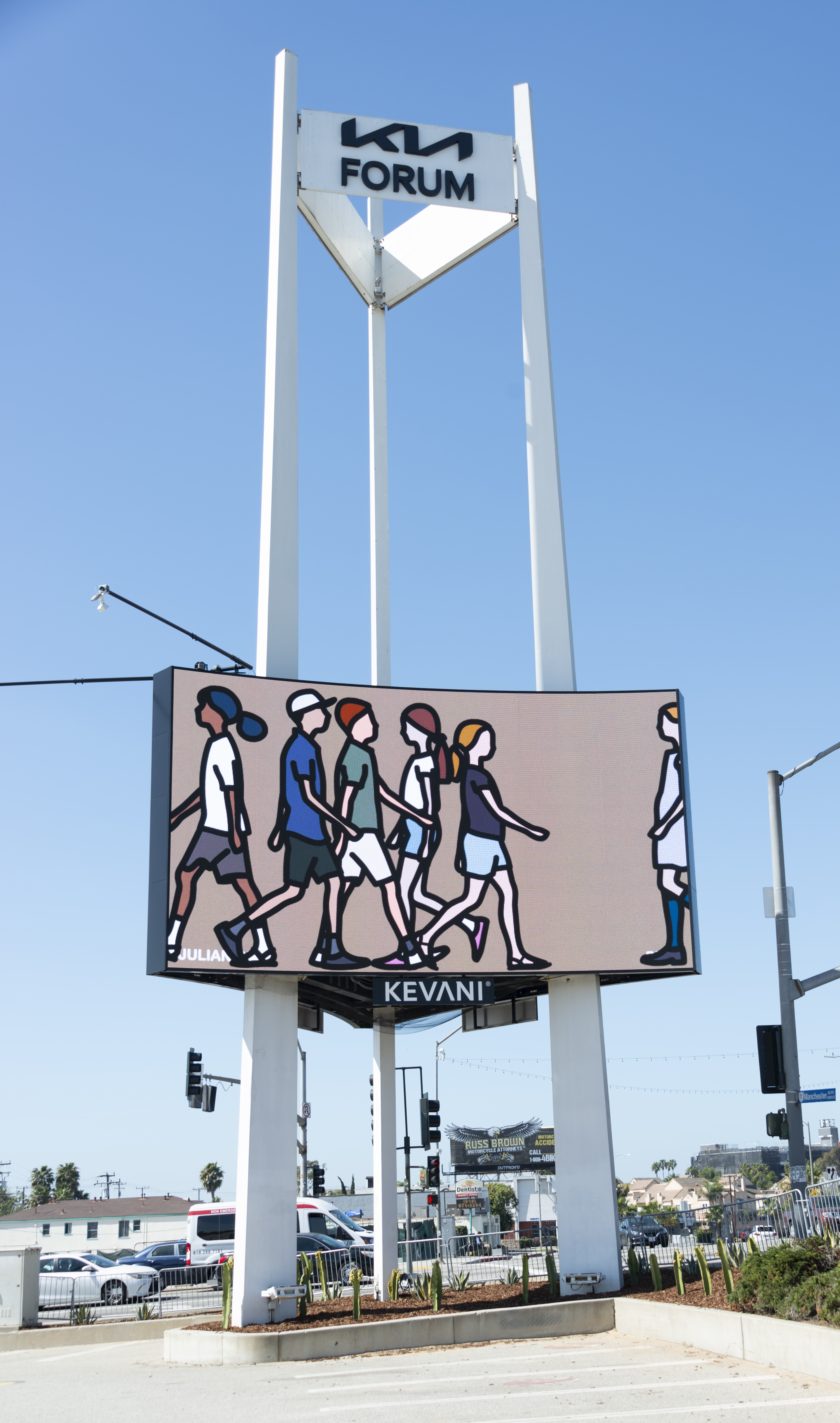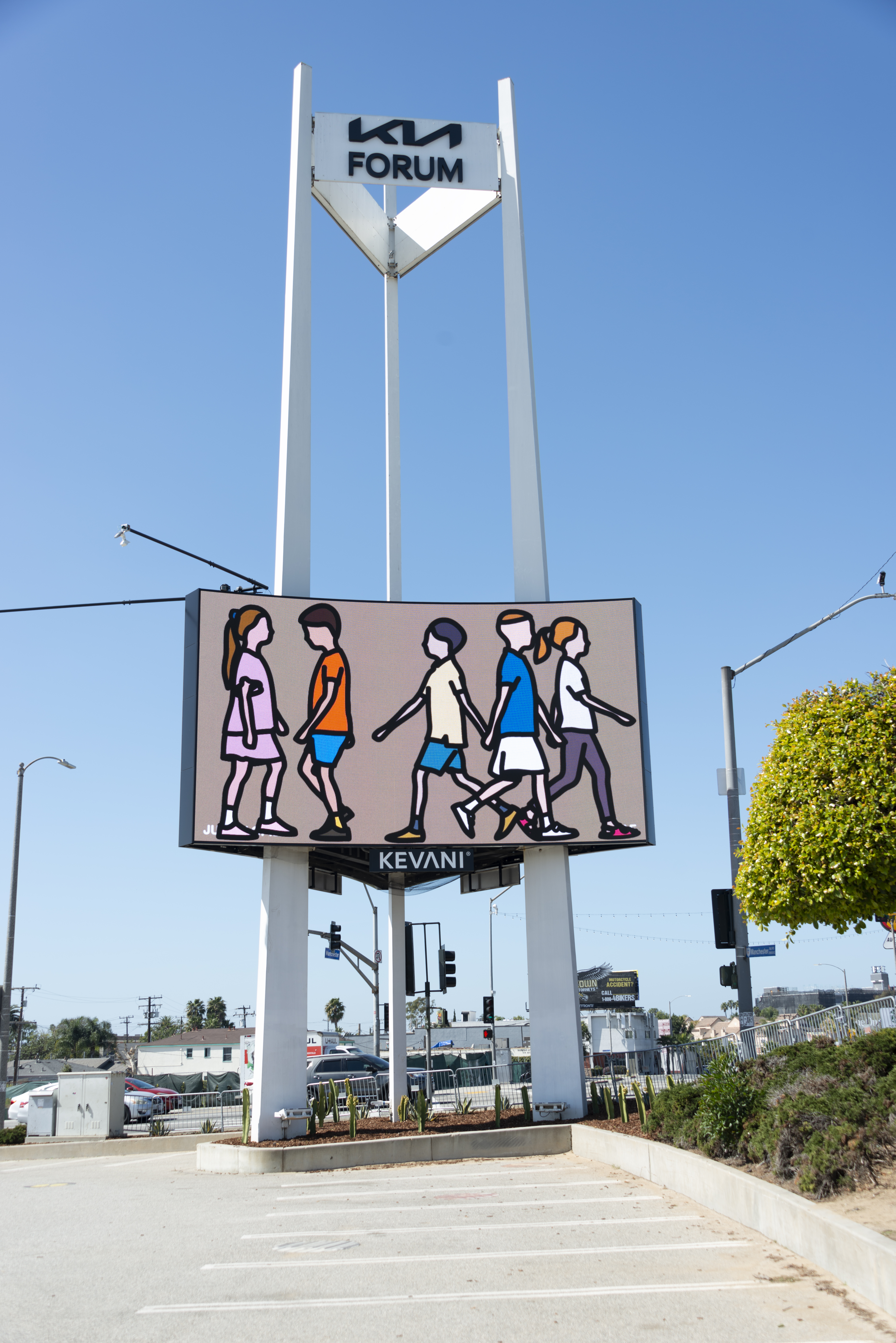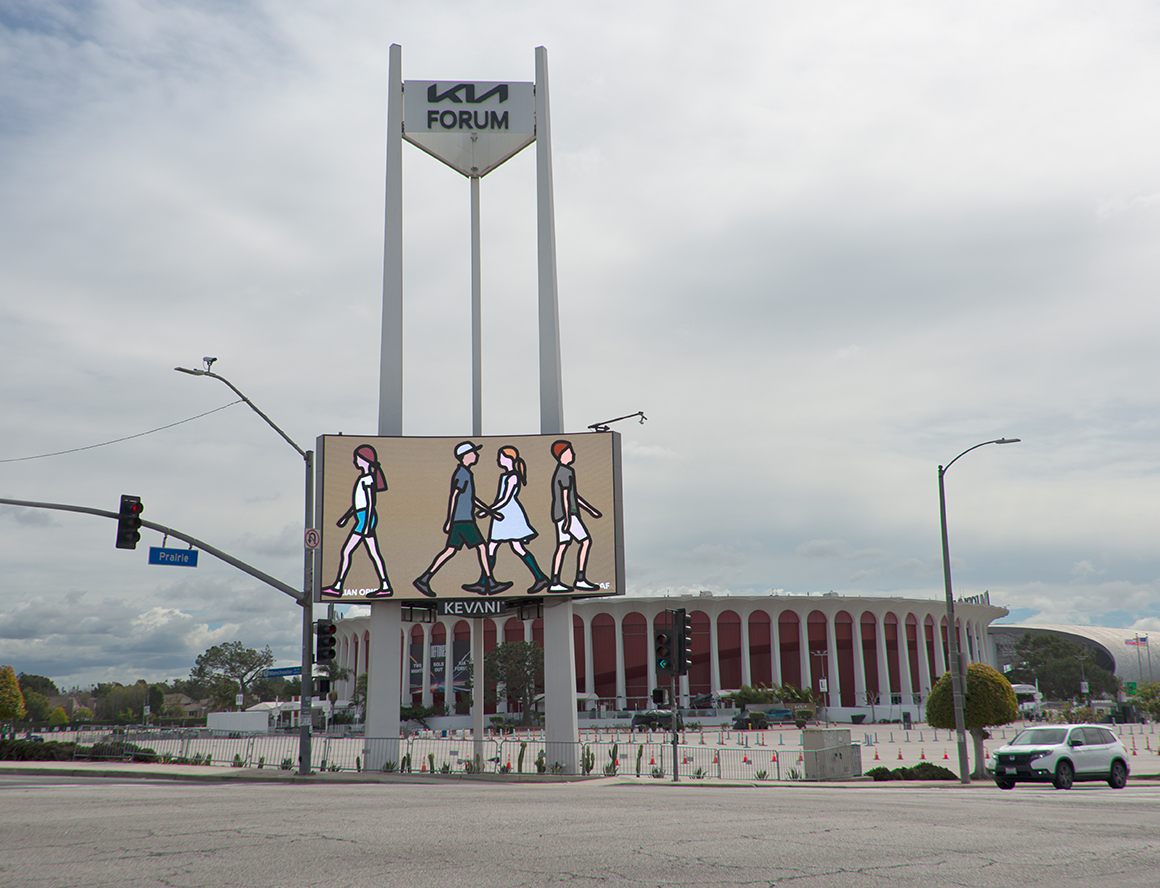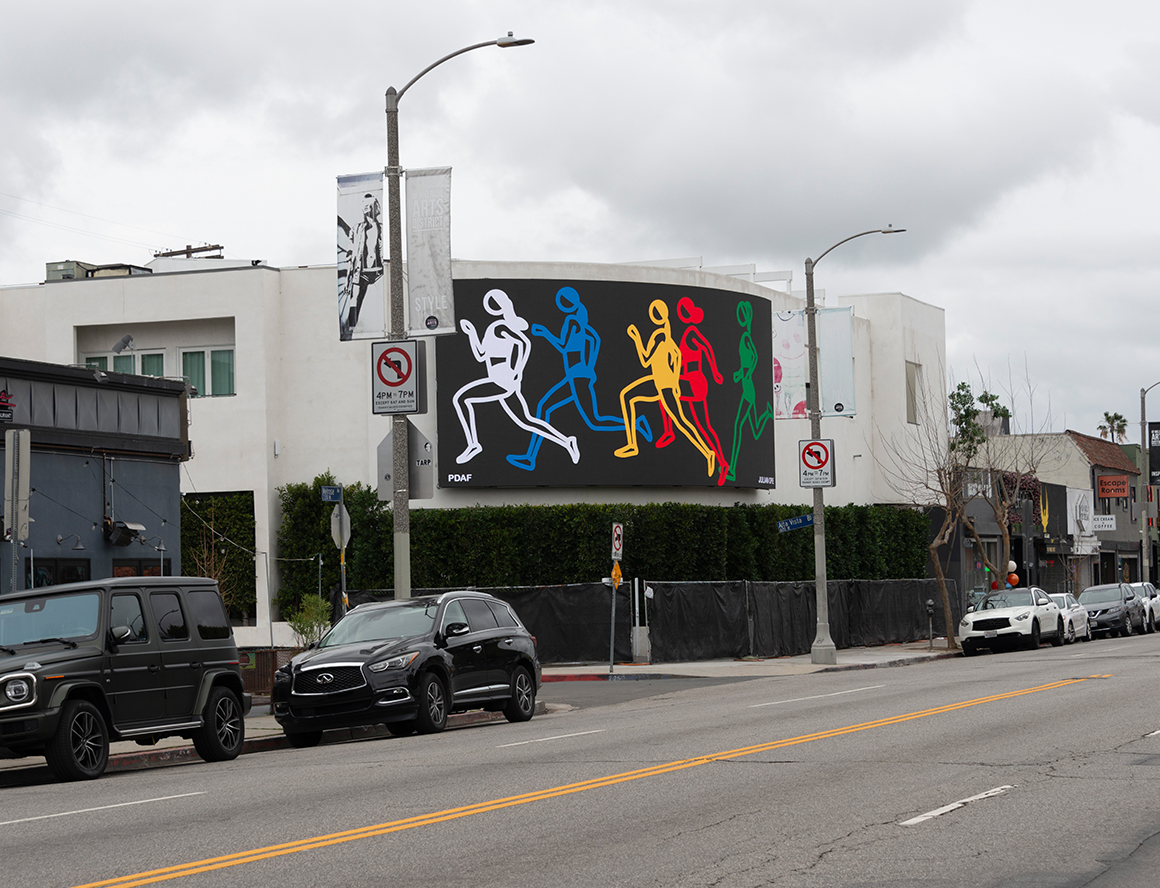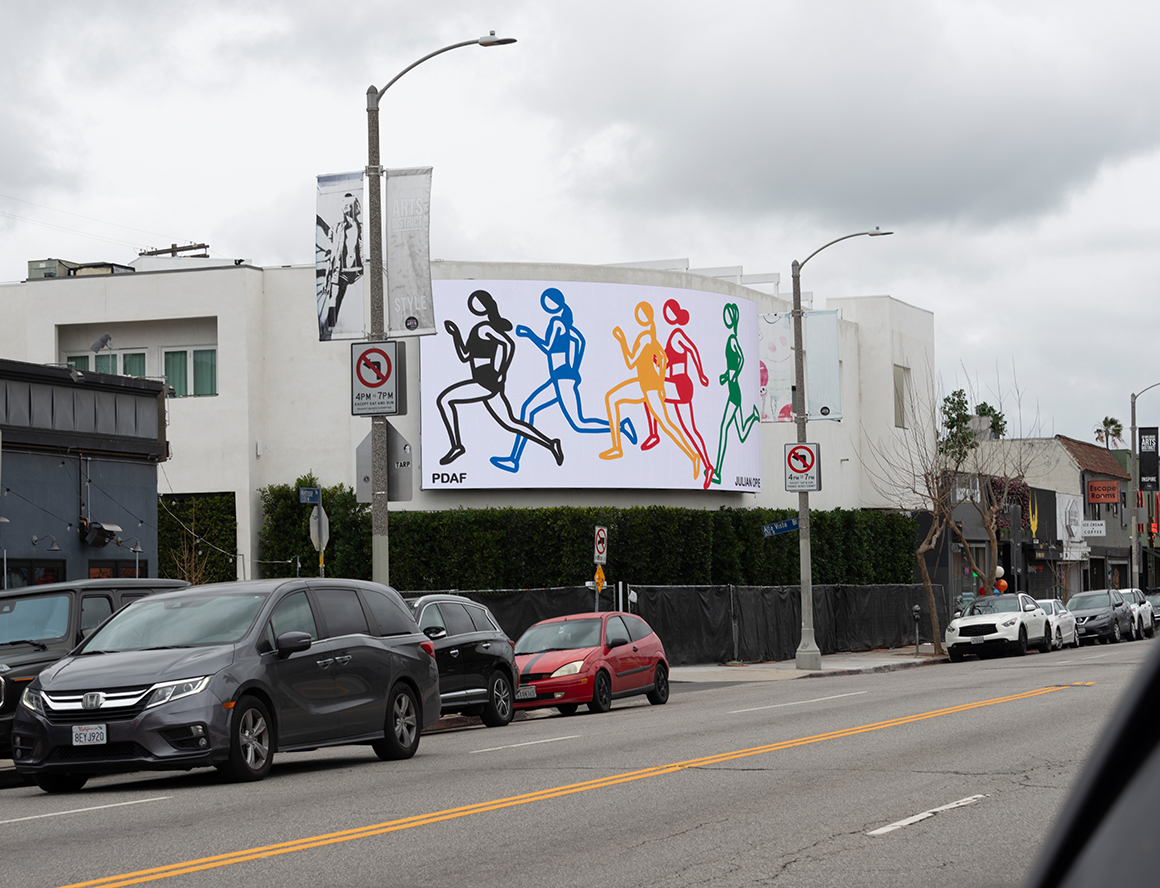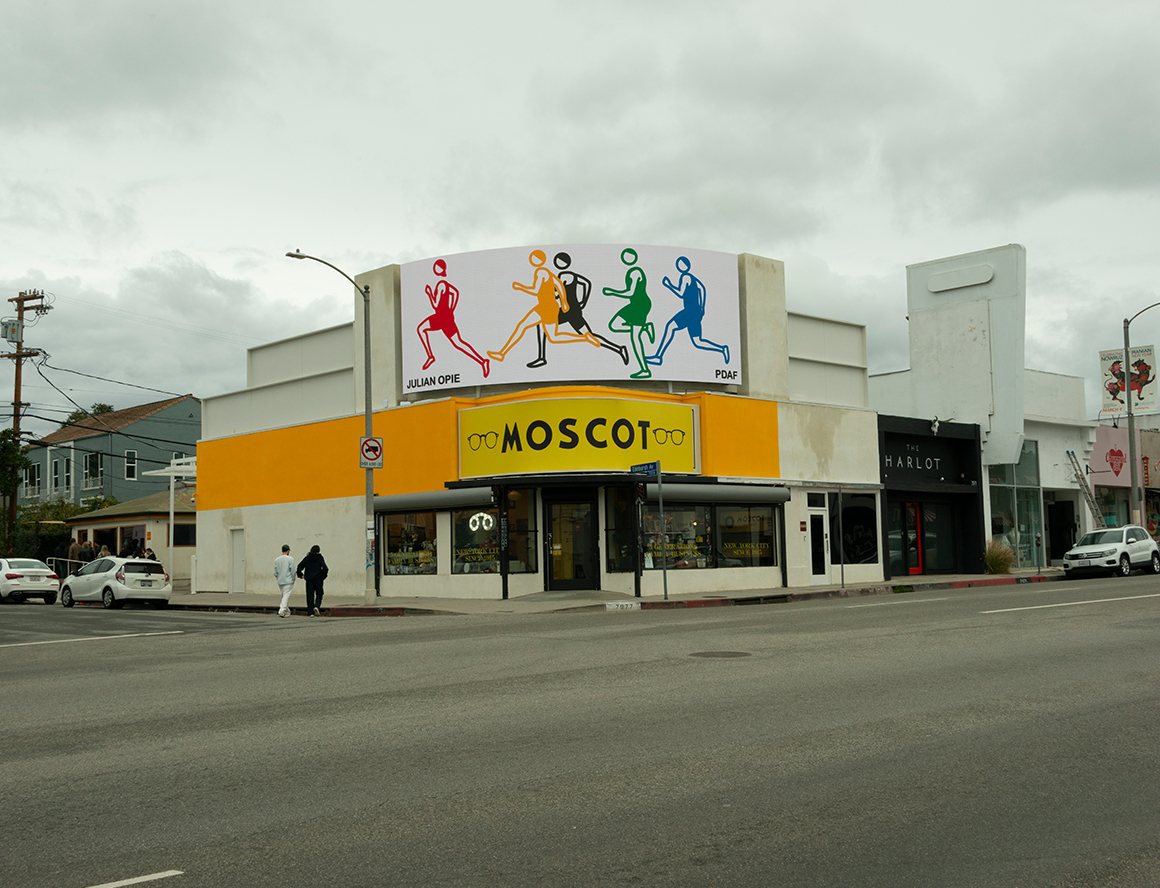Lisson Studio
Julian Opie
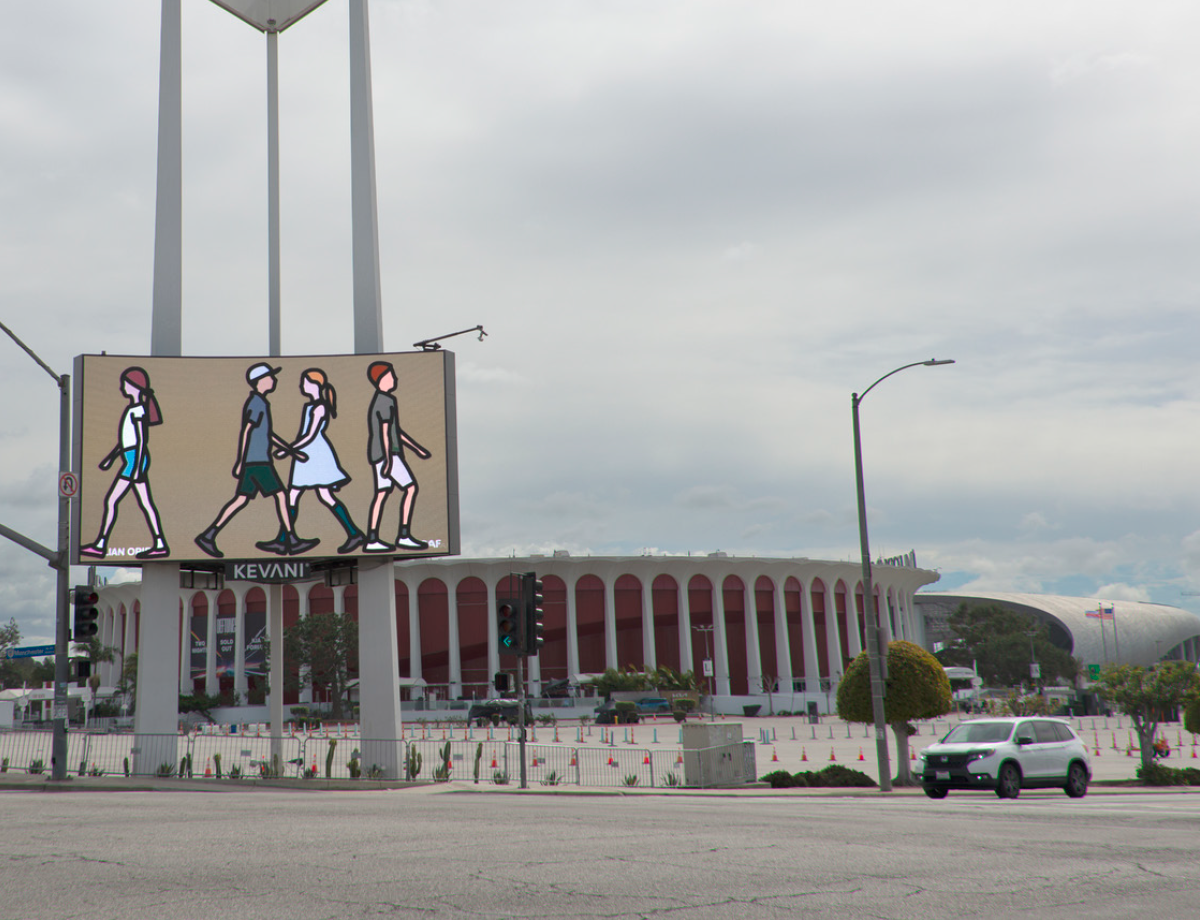
Julian Opie displays city-wide artworks in Los Angeles and Baltimore
Julian Opie transforms Los Angeles and Baltimore into an open-air gallery with KEVANI and the Public Digital Art Fund. Opie’s instantly recognizable walking and running figures, rendered as static and moving paintings on LED screens, are showcased publicly across displays around the city. These include South Bay Pairing, Fig Spectacular, The Trio, Baltimore Duo, Melrose Lights, i10 Beacon, and 2nd & PCH.
Opie’s graphic language – concise silhouettes, fluid movement, and distilled essence – finds new context within the urban landscape. His characters walk, sprint, and exist in the in-between, dissolving into the rhythm of the metropolis. From Downtown Los Angeles to West Hollywood, and Baltimore – art becomes part of the city's architecture. This project reimagines what public art can be – an open dialogue, a shared experience, and a bridge between the physical and digital worlds.
This ambitious installation runs concurrently with the artist’s solo exhibition at Lisson Gallery New York, on view through 19 April. United by the theme of the walking figure, the exhibition encompasses sculptures, animations and paintings, these extend the artistic vocabulary that he has developed over four decades – “a language of forms, of images, of people.”
Always exploring different techniques both cutting edge and ancient, Opie plays with ways of seeing through reinterpreting the vocabulary of everyday life; his reductive style evokes both a visual and spatial experience of the world around us. Drawing influence from classical portraiture, Egyptian hieroglyphs and Japanese woodblock prints, as well as public signage, information boards and traffic signs, the artist connects the clean visual language of modern life, with the fundamentals of art history.
“Each retina reads a flat image, but your body senses space, and that – combined with bifocal vision and movement – means that a picture with a carved depth creates a kind of animation, a sort of magic trick as your brain reads, with image and material competing in the same space.” Julian Opie, 2024
These works mark a new development in that Opie hasn’t previously included children in his images of walking crowds, and while the animations are schematic – types who might almost have sprung from an instruction manual – they are also made individual. No two figures are alike. The cyclical movement, too, varies within each animation. As Opie has noted: “Each child walks at a slightly different speed, so the relationships between them change over time like four independent pendulums.”


